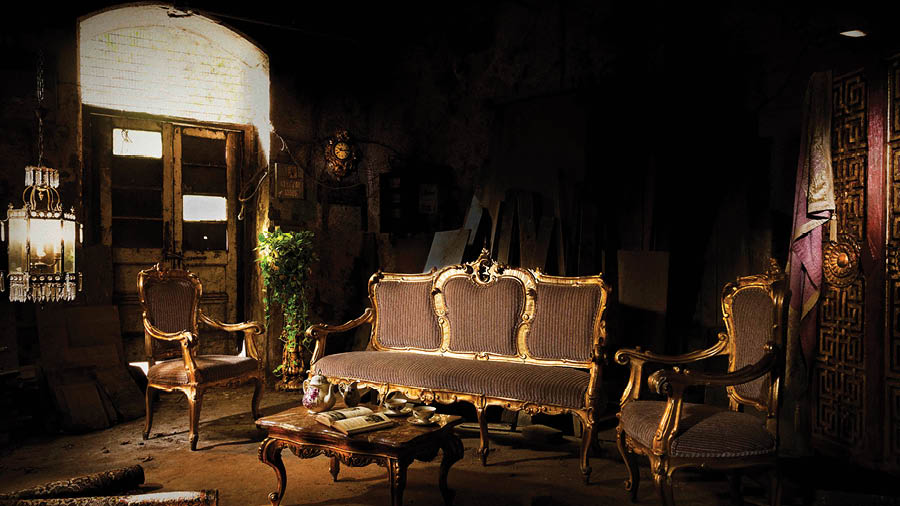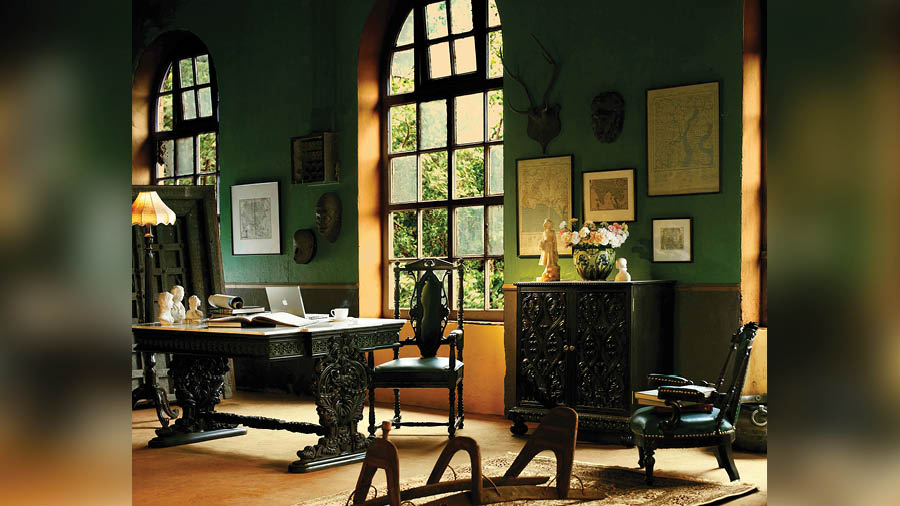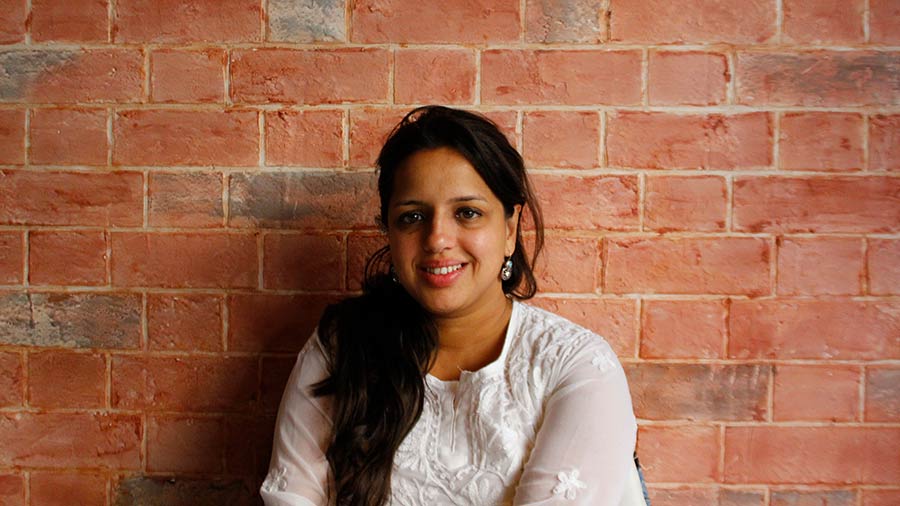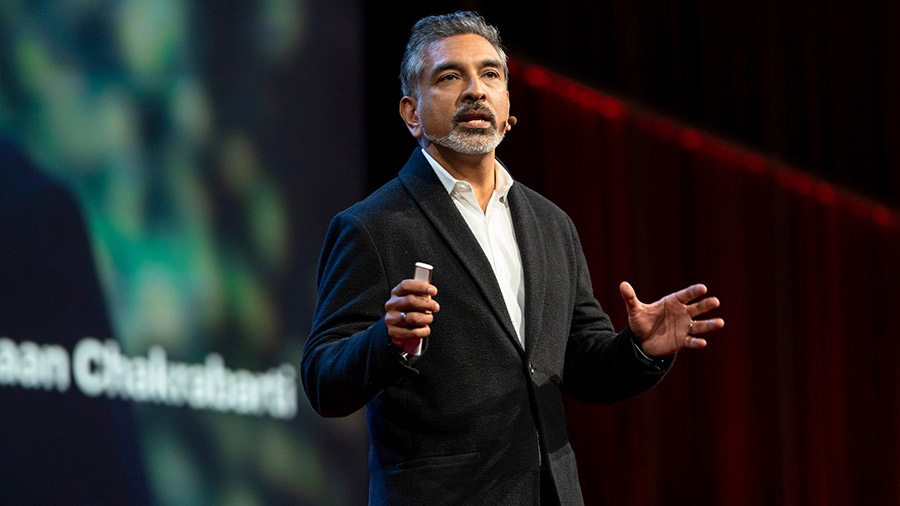Despite being brought up in Mumbai, when Anurag Kanoria began his search for craftsmen for The Great Eastern Home, his home decor brand in India’s financial capital, he turned to Kolkata. Why this city specifically? “Because Kolkata’s artisans are among the best in India, having trained in the British furniture houses in the city, imbibing skills from the British era,” said Kanoria, director of The Great Eastern Home, which has its stores in Byculla and Vikhroli in Mumbai.
Kanoria’s furniture brand has carved out a niche for itself by steering clear of mass production and turning its focus to “luxury elevated through fine craftsmanship”. From the selection of wood to stylistic specifications, from crafting techniques to the polish and finishing, The Great Eastern Home brings together designers and artisans of international repute to ensure that each piece of their extensive collection stands out from the crowd. Their band of craftsmen, perhaps the very last generation to have learned their craft in the furniture houses from Kolkata’s colonial era, add their own flair to the designs, resulting in decor that is a mix of elegance and utility. My Kolkata caught up with Kanoria over email to discuss his brand, his vision and the influence of Kolkata on both.
My Kolkata: What inspired you to start The Great Eastern Home?
Anurag Kanoria: I’ve always had a great passion for furniture, interiors, artefacts, and more. So, when I got the opportunity to pursue it as a hobby, I went for it. Before I knew it, it organically grew into a business, and here we are! It’s a passion that has become a business, which in a way is a blessing, and I love it.
‘Contemporary pieces that rely heavily on human skills, which can’t be replicated by machines’

Anurag Kanoria, director of The Great Eastern Home, is a frequent visitor to Kolkata The Great Eastern Home
How did you curate your team of craftsmen? How has this impacted your collection?
For furniture making and craftsmanship with wood, I feel workers from Kolkata are among the best in India because they have been trained in the British furniture houses in Kolkata. I think we now have the last generation of these workers. I have my doubts about these skills getting passed on further, but while these craftsmen are here, I would love to create as many pieces as we can [with them].
Our collection is based on pieces that are very skill-based and not just straight line-oriented. This includes pieces that require intricate knowledge of woodwork and reflect a sense of the history of the furniture and its aesthetics. The craftsmen definitely impact our collection because when it comes to fine reproductions or some of the most intricately carved contemporary pieces that we are designing, I think what we’re producing is the best that can be made. It’s also special in another sense, because we’re one of the few design studios making fine European reproductions as well as contemporary pieces that rely heavily on human skills, which can’t be replicated by machines.
Since many of the craftsmen worked during the British era, one can assume that they are quite senior. How do you intend to replace them while keeping their vision and values in tact?
This is, as I said, the very last generation of these craftsmen. I don’t think these skills are going to be passed on to the next generation. Unfortunately, I don’t think it’ll be possible to make such kinds of pieces, at least not at this scale, in the future. We’ll have to adapt and rework our collections eventually.
How does The Great Eastern Home set itself apart from other luxury furniture brands on the market today?
The Great Eastern Home’s brand philosophy and aesthetics come from a very rich tradition, backed by a strong knowledge of styles during various historical periods. It’s something exclusive to our brand, and we have worked on refined reproductions from across eras — the Victorians, Louis XIV, XV, XVI, Queen Anne and all the way to the intricacies of Art Nouveau and Art Deco.
‘The craftsmen from Kolkata have a more Western influence in their work, which suits us’

The sensibilities of The Great Eastern Home rely a lot on the history and heritage of vintage Western styles The Great Eastern Home
Given that your carpenters are from Kolkata, how would you say the city has influenced your furniture pieces in terms of design? Is there any place in Kolkata that has been particularly influential?
The carpenters used to belong to guilds initially. These guilds were run by British furniture houses, so their skill sets are very attuned to European/Western/Victorian proportions and aesthetics. Most other cities and states in India that boast of fine craftsmen (like Rajasthan) largely come from North Indian tradition. While their skills are also excellent, their sense of proportions are more Indian, so to speak, whereas the craftsmen from Kolkata have a more Western influence in their work, which suits us because we have a more Western/European sensibility to our styles.
While no particular part of Kolkata has been more influential than the others, I’d say that all the old havelis, the old mansions and baris scattered across the city have had a role to play. All of these spaces, or wherever there were Bengalis, Marwaris, or even the elite Britishers of their time, leaned towards some kind of European or hybrid European style. Kolkata, therefore, is full of places with furniture and architecture that suits us.
Have you visited Kolkata? Does any place here stand out for you in terms of its architecture or interiors?
Yes, of course. I have visited Kolkata numerous times. Incidentally, I was also born there, so I have friends and relatives there. I know its history, aesthetics and architecture. I’ve seen most of the famous homes of Kolkata from the inside. I’m familiar with what homes in the city were and are like. My own sensibility has been influenced by the historical styles here.
‘Art Nouveau is the most difficult European period style to make today’

Working on challenging Art Nouveau period pieces has made his team more confident, feels Kanoria The Great Eastern Home
The Great Eastern Home is especially famous for its pieces from the Art Nouveau period. What is the specialty of this period and how does it reflect in your furniture?
It’s not only the Art Nouveau period that the Great Eastern Home is famous for. It just so happens that during a particular phase, we did a lot of reproductions of Art Nouveau. We also worked on contemporary versions of Art Nouveau. It’s an extremely difficult form to replicate. I’d say it’s probably the most difficult European period style to make today. But having gone through it, we’re now confident of crafting pieces based on any style. Art Nouveau has been not only a fabulously interesting and enriching style, but also a learning process for us.
Do you offer customisation options for your furniture pieces to cater to individual preferences?
Yes, we certainly do a lot of customisations in keeping with our brand’s aesthetics. Sometimes, if we feel that the aesthetics don’t match what the customers want, then we guide the customers towards a more balanced approach. On rare occasions, we may even choose to not go ahead with a customisation if we feel that it is not aligned with what we do.
How do you strike the balance between aesthetics, functionality and sustainability?
Functionality and aesthetics are always difficult points, especially when dealing with vintage furniture, historical styles, etc, because our sense of functionality has changed over the years. Even though we might appreciate a lot of the earlier aesthetics, we have to change the ergonomics or proportions to fulfil the needs of contemporary times.
Sustainability is certainly an issue with luxury across all genres, and while we try and use sustainable materials where we can, I wouldn’t say that we are 100 per cent sustainable yet. It’s very difficult to fit sustainability with high-end aesthetics, but we try wherever we can.
A collection spanning from Ottoman to French to Chinese pieces

Some of The Great Eastern Home’s pieces are the only ones of its kind in the country The Great Eastern Home
What are some of the standout pieces from your collection?
We have original Ottoman Empire cabinets from the late 1700s. We have French furniture from the early 1700s. We even have Chinese furniture from the Qing dynasty. We had a beautiful Ming period cabinet, which was picked up by a client in Kolkata. We also have original Art Nouveau furniture, including Emile Galle’s signed pieces, which are the only ones in India, I think.
Lastly, do you have plans to expand to other cities? Is Kolkata on the list?
Kolkata is definitely a growing market, and I have had a lot of clients from there over the years. Yes, we do plan to expand to other cities, but we haven’t yet come up with a list. Theoretically, though, Kolkata would be a lovely city to house The Great Eastern Home because it fits in so well with our philosophy and sensibilities.


